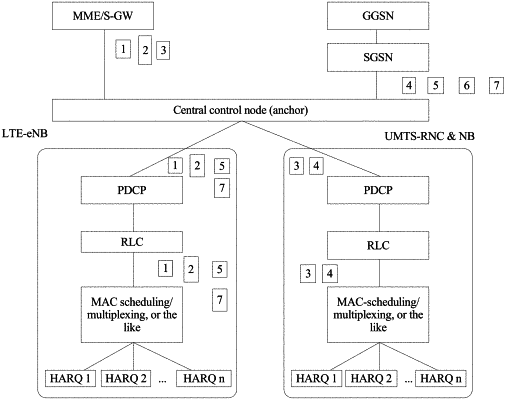| CPC H04L 1/18 (2013.01) [H04L 1/1812 (2013.01); H04L 1/1822 (2013.01); H04L 1/1825 (2013.01); H04L 1/1896 (2013.01); H04W 16/14 (2013.01); H04W 76/10 (2018.02); H04W 76/15 (2018.02); H04W 76/28 (2018.02); H04W 88/06 (2013.01); H04L 1/1887 (2013.01); H04L 2001/0093 (2013.01)] | 31 Claims |

|
1. A method comprising:
receiving, by a terminal device, a message from an access network device, wherein the message comprises configuration information of discontinuous reception (DRX) of at least two cells, wherein the DRX configuration information comprises duration information of a DRX retransmission timer of the at least two cells and duration information of a hybrid automatic repeat request (HARQ) round trip time (RTT) timer of the at least two cells, and wherein the at least two cells use different radio access technologies (RATs);
using, by the terminal device and according to the DRX configuration information, the DRX retransmission timer with different durations for different RATs and the HARQ RTT timer with different durations for different RATs to perform DRX, wherein at least two of the different RATs have different frame structures; and
sending a scheduling request (SR) to the access network device, wherein the SR comprises information about logical channels associated with the at least two RATs.
|